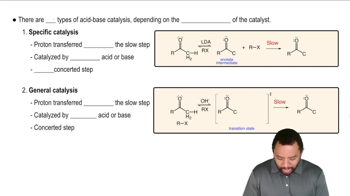Predict the product of the following Friedel–Crafts alkylation reactions. Assume only one alkyl group adds in each case.
(d)
 Verified step by step guidance
Verified step by step guidance Verified video answer for a similar problem:
Verified video answer for a similar problem:



 6:30m
6:30mMaster Friedel-Crafts Alkylation with a bite sized video explanation from Johnny
Start learning